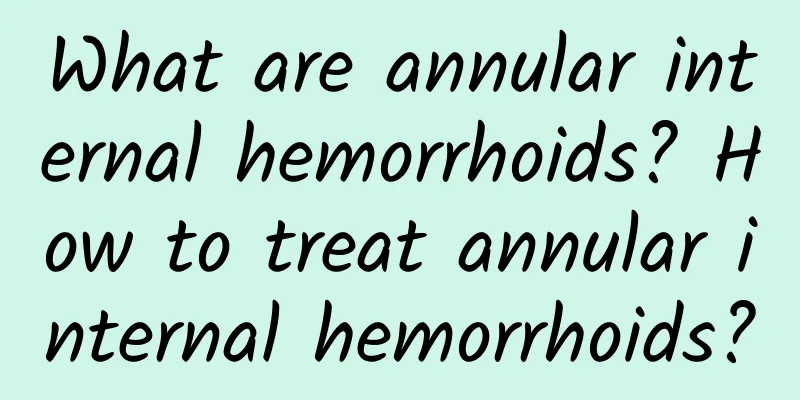What is cerebral infarction and what causes it?

|
According to survey statistics from authoritative organizations, there are currently 2.5 million new cases of cerebral infarction in China each year, and 1.5 million patients die from cerebral infarction each year nationwide. If we look at the world as a whole, 5.7 million patients die from cerebral infarction each year. The huge number of patients has attracted the attention of more and more people. So what is cerebral infarction? 1. Cerebral infarction (cerebral infarction, cerebral infarction, ischemic stroke): Cerebral infarction is the destruction of brain tissue in the corresponding part after cerebral artery obstruction, which may be accompanied by bleeding. The pathogenesis is thrombosis or embolism, and the nature of the symptoms varies depending on the blood vessels affected by the lesions. Cerebral infarction accounts for 70% to 80% of all strokes. 2. Cause: Cerebral infarction is caused by a sudden decrease or cessation of blood flow in the local blood supply arteries of the brain tissue, resulting in ischemia and hypoxia of the brain tissue in the blood vessel supply area, leading to necrosis and softening of the brain tissue, accompanied by clinical symptoms and signs in the corresponding parts of the body, such as hemiplegia, aphasia and other symptoms of neurological dysfunction. 3. Main factors: hypertension, coronary heart disease, diabetes, overweight, hyperlipidemia, preference for fatty meat, many patients have a family history. It is more common in middle-aged and elderly people aged 45 to 70. 4. Clinical symptoms: The clinical symptoms of cerebral infarction are relatively complex. They are related to the site of brain damage, the size of ischemic blood vessels in the brain, the severity of ischemia, the presence or absence of other diseases before the onset of the disease, and the presence or absence of other important organ diseases. In mild cases, there may be no symptoms at all, that is, asymptomatic cerebral infarction; it may also manifest as recurrent limb paralysis or dizziness, that is, transient ischemic attack; in severe cases, there may not only be limb paralysis, but even acute coma and death. If the lesion affects the cerebral cortex, epileptic seizures may occur in the acute phase of cerebrovascular disease, with the highest incidence rate within 1 day after the onset of the disease. Cerebrovascular disease with epilepsy as the first onset is rare. 5. Treatment: Patients with this disease should pay attention to the treatment of hypertension, especially those with a history of lacunar infarction, who need to prevent recurrence. At the same time, care should be taken not to reduce blood pressure too quickly. (1) Acute phase The principle is to improve blood circulation in the ischemic area of the brain as soon as possible and promote recovery of neurological function. (2) Recovery period Continue to strengthen the functional training of paralyzed limbs and speech functions. In addition to medication, physical therapy, body therapy, acupuncture, functional foods, etc. can be used in combination. |
<<: What are the general nursing measures for cerebral infarction rehabilitation?
>>: The difference between fish oil and deep sea fish oil, what are the effects of fish oil
Recommend
The most effective treatment for vitiligo
Vitiligo is a skin disease that is difficult to t...
Interpreting the causes of dermatomyositis from the perspective of traditional Chinese medicine
Many diseases are completely different when viewe...
What causes otolith disease?
Otolith disease is also called otolith disease. T...
Can you eat bananas while taking Chinese medicine? You need to know the 6 taboos of taking Chinese medicine
Due to the development of today's society, pe...
Treatment of lumbar disc herniation
The waist is very important to our human body. Ma...
Black and loose stools
People basically have to eat every day. The food ...
What to do if you have a cough
Bronchitis often causes symptoms of coughing. Whe...
The role and efficacy of white Poria
Maybe you have seen white Poria cocos, or maybe y...
Side effects of long-term consumption of tiankui seeds
Most of the Tiankui seeds grow and develop in Jia...
What happens if a teenager ejaculates too much?
Teenagers are relatively ignorant about sex. If t...
What to do if there are many red spots on the male glans
If some red spots appear on the glans of a man, t...
Can Fengyoujing cure prickly heat?
Fengyoujing is a relatively common medicine with ...
Can moxibustion cure kidney cysts?
Moxibustion can be used to treat kidney cysts or ...
What is the normal heart rate for hyperthyroidism?
What is the normal heart rate for hyperthyroidism...
The efficacy and function of red okra
Do you know about the plant called red okra? It h...









